
Previous Mobility Colloquia
Some documents are made available in PDF format. You will need Adobe Reader to view them. 
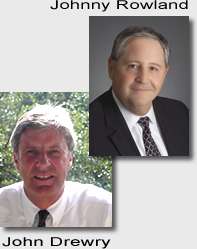
"Smarter City Vision: An Opportunity to Think and Act in New Ways"
John F. Drewry
Client Executive, State of Texas, IBM Corporation
H. John Rowland, Jr., PE
Intelligent Transportation Solutions, IBM Corporation
H. John Rowland, Jr., PE
John Rowland has over 30 years of experience in heavy industrial construction management, large enterprise public works management and the practical application of information technology to solve real world problems, all in the public sector. In his career he has served as both a federal and local government contracting officer on construction and public works projects. As a private consultant and contractor he has proposed, won and delivered numerous government contracts in construction, public works operations, technology development and systems integration. He holds a B.S. Mechanical Engineering from the U.S. Naval academy and a M.S. from the School of Civil Engineering at the Georgia Institute of Technology. He is a registered professional engineer and experienced construction contract arbitrator.
John F. Drewry
John Drewry graduated from Carleton University in Ottawa, Canada with a major in Political Science and a minor degree in Law. In his 18 years with IBM Canada, he held several Sales and Marketing Management positions across several industries, culminating in country wide Competitive Marketing Management and then IBM Leasing Portfolio responsibilities. In 1996, John was recruited to Raleigh, NC to help build the IBM OEM (Original Equipment Manufacturing ) business worldwide for IBM Networking. In 2001, John then relocated to Austin to build the IBM OEM business as a key part of the Dell-IBM Strategic Alliance for technology. These responsibilities were followed by his role as Western US Sales Manager, IBM Engineering and Technology Services. In 2006, John joined the IBM Public Sector, leveraging his technology, innovation and global business process services skills, as Client Executive, State of Texas.
Synopsis by Rick Davenport, TTI Communications
Flyer:
![]() [ JPG, 237K ]
[ JPG, 237K ]
Slides
![]() [ PDF, 3.65M ]
[ PDF, 3.65M ]
Streaming Video, 51:29
(Note: Temporary video issues were resolved 4:45 into the recording.)
[ Top ]
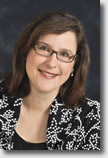
"Secrets to Success: How to Compete for UTCM Funding"
Melissa S. Tooley, PhD, PE
Director, UTCM
UTCM Director Melissa Tooley introduced the UTCM Request for Preliminary Proposal for FY11, including tips for submitting winning UTCM Preliminary Proposals and new information for FY11 submissions. The UTCM strongly encourages anyone interested in submitting a Preliminary Proposal to view the streaming video of this presentation.
Flyer:
![]() [ JPG, 173K ]
[ JPG, 173K ]
Slides
![]() [ Slides [PDF, 717K]
[ Slides [PDF, 717K]
Slide Handouts
![]() [ Slide Handouts [PDF, 259K]
[ Slide Handouts [PDF, 259K]
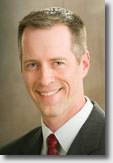
"A New Vehicle Design for Rural and Urban Patient Transport"
Mark E. Benden, PhD, CPE
Assistant Professor, Texas A&M Health Science Center, School of Rural Public Health, Department of Environmental and Occupational Health
Brief Bio
Unique Ambulance Highlighted at Colloquium
Some 59 million Americans live in rural areas, many of them isolated from health care access. Texas A&M Health Science Center assistant professor Mark Benden and his co-inventor, Dr. Eric Wilke, are developing a three-wheeled, long-framed medical transport vehicle that could reach patients in areas where traditional ambulances can’t travel.
The AmbiCycle™ was the subject of the April 6 Mobility Colloquium.
"I see this as an option for rural patients who need emergency transportation but can’t get it from traditional EMS care," Benden explains. Benden and Wilke envision the AmbiCycle™ being used in a variety of other settings, including congested urban areas (where gridlock stalls traditional large ambulances), military deployments, commercial locations such as refineries, and as a low-cost alternative to traditional ambulance service in underdeveloped nations.
When Benden and Wilke first considered the concept of an ambulance alternative, they knew that if it were to access the areas they envisioned and be affordable to the communities to be serviced, they would be limited to strict design parameters: the vehicle must be less than 36 inches wide, highly stable with a tight turning radius, operated by just one person and priced under $2,000.
Because the patient is transported beneath the seat (see photo), "the AmbiCycle™ allows for constant visual contact between the driver and the patient," Benden says, unlike other types of medical transport vehicles.
The inventors are seeking funding for the manufacture of the AmbiCycle™. They applied for a provisional patent in January 2009.
[ Top ]

"Logistics for Public Freight Planners: Theory and Practice"
Bruce Wang, PhD
Assistant Professor, Zachry Department of Civil Engineering
Brief Bio
UTCM Tackles Freight Planning
Making sure deliveries make it to their destination on time has never been more important to the private sector logistics practitioner. Freight logistics are driven by business strategies, and in turn, logistics drive the flow and ebb of freight traffic on the transportation system. In his Mobility Colloquium presentation, Dr. Bruce Wang demonstrated the big picture of the supply chain, reviewed the rapid progress in theories and practices of logistics and supply chain management, and discussed new technologies that have impact on logistics practices.
"There is a great need for improved public freight planning by better understanding and applying logistics practices," Dr. Wang emphasized to Colloquium attendees. The Zachry Department of Civil Engineering assistant professor based his presentation on a short course he developed along with his colleagues at the University of Wisconsin.
Flyer:
![]() [ JPG, 237K ]
[ JPG, 237K ]
Slides
![]() [ PDF, 1.5M ]
[ PDF, 1.5M ]
Streaming Video
[ Top ]
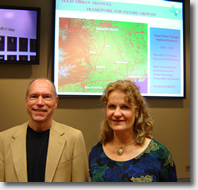
"The Texas Urban Triangle: Framework for Future Growth"
Michael Neuman, PhD, AICP
Associate Professor, Department of Architecture
Brief Bio
Elise Bright, PhD, AICP
Professor, Department of Architecture
Brief Bio
Research Project Puts Texas Urban Triangle on the Map
The Texas Urban Triangle, comprised of the metropolises of Dallas-Fort Worth, Houston, San Antonio, and Austin, represents the most rapid growth occurring in the urban state of Texas. The Triangle is home to over 17 million people, almost 70% of the state’s population, and this figure is predicted to expand to over 80% in the next 20 years. The Texas Urban Triangle is singular, new, complex, and important.
The impacts of growth, both positive (new homes, new jobs and businesses, new transportation and infrastructure networks) and negative (less farm and ranch lands, increased pollution) are easy to predict based on past experience. How we handle this new growth in the Texas Urban Triangle will determine to a large degree whether Texas continues to prosper and enjoy an affordable, high quality of life.
Addressing four basic research questions in the Texas Urban Triangle, we can construct a framework for future growth:
- Where should the growth go in the future?
- What are the impacts of that growth?
- Are those locations vulnerable to hazards both natural and human?
- What scale/type/location of infrastructures are necessary to support growth?
Flyer:
![]() [ JPG, 256K ]
[ JPG, 256K ]
Slides - Neuman
![]() [ PowerPoint, 10.1M ]
[ PowerPoint, 10.1M ]
Slides - Bright
![]() [ PowerPoint, 47.6M ]
[ PowerPoint, 47.6M ]
Streaming Video
[ Top ]
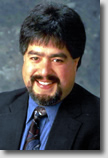
"Transportation and Mobility in Architecture: Research Challenges and Opportunities"
Jorge Vanegas, PhD
Interim Dean, College of Architecture
Director, Center for Housing and Urban Development (CHUD)
Professor, Department of Architecture
Brief Bio
UTCM Presentation Bridges Architecture with Transportation
It’s clear that Jorge Vanegas approaches life’s problems and solutions on a much different level than most people. He believes that we are all connected through the complexity of our environment. The interim dean of Texas A&M University’s College of Architecture presented the latest Mobility Colloquium for the University Transportation Center for Mobility (UTCM). The September 29 presentation was entitled "Transportation and Mobility in Architecture: Research Challenges and Opportunities."
Vanegas, who is also the director of the Center for Housing and Urban Development, said that we are all bound together by—and products of—what he called the "built environment," which he explained as our man-made surroundings and our activities within those surroundings.
"At first glance, the world of architecture is not relevant to the world of transportation, but it is very relevant," Vanegas told the lunchtime gathering. "From urban planning and design through transportation infrastructure to individual facilities, mobility is a common thread."
In addition, as another relationship between architecture and transportation, Vanegas pointed to one of the building blocks of transportation infrastructure: concrete. "Concrete on its own is non-aesthetic," he says. "So how do we make it beautiful? It’s time for us to challenge ourselves."
Vanegas urged the researchers and students attending the presentation to realize the numerous research opportunities that are available connecting architecture and transportation. "Challenges create opportunities," Vanegas explained. "Once you realize the interconnected, complex nature of our world, you can open the door to just about any kind of research you may want to do."
Flyer:
![]() [ JPG, 212K ]
[ JPG, 212K ]
Slides
![]() [ PowerPoint, 9.76M ]
[ PowerPoint, 9.76M ]
Streaming Video
[ Top ]
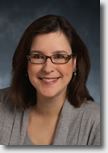
"Secrets to Success: How to Submit a UTCM Proposal"
Melissa S. Tooley, PhD, PE
Director, UTCM
UTCM Director Melissa Tooley introduced the UTCM Request for Preliminary Proposal, offered tips for submitting winning UTCM preliminary proposals and entertained questions from the audience. Martha Raney Taylor, UTCM's Business Manager, reviewed the updated UTCM budget form.
Flyer:
![]() [ JPG, 236K ]
[ JPG, 236K ]
Slides
![]() [ PowerPoint, 1.1M ]
[ PowerPoint, 1.1M ]
Slide Printouts
![]() [ PDF, 202K ]
[ PDF, 202K ]
Handout: Preliminary Proposal Form
![]() [ PDF, 63K ]
[ PDF, 63K ]
Handout: Budget Worksheet
![]() [ Excel, 160K ]
[ Excel, 160K ]
Streaming Video
[ Top ]

"Older Road User Safety and Mobility in Australia and Japan"
Sue Chrysler, PhD
Senior Research Scientist and Manager
Human Factors Group
Center for Tranpsortation Safety
Texas Transportation Institute
Brief bio
UTCM Colloquium Examines Older Driver Issues Abroad
Can the Japanese and Australians teach us something about traffic safety? The answer seems to be "yes," based on the latest University Transportation Center for Mobility (UTCM) colloquium presented by Sue Chrysler, manager of the Human Factors Group.
Chrysler’s UTCM presentation July 14 detailed a recent Federal Highway Administration International Scan Tour to both countries. "The Australians have very similar demographics to the United Sates, so we concentrated our visit in three Australian states: New South Wales, Victoria, and Queensland," she said. Chrysler pointed out that despite the similarities, Australia has a much lower fatality rate than the U.S. based on population. "Australia is very aggressive in enforcement measures, using radar, speed cameras and road checks."
The presentation, entitled "Older Road User Safety and Mobility in Australia and Japan" focused on the efforts in those countries to make traveling safer for the older driver. Chrysler found that both countries have implemented safety measures with them in mind, including infrastructure improvements, speed control and pedestrian improvements.
"The population of the United States is aging," Chrysler says. "And based on our scan tour, it’s clear that the efforts in those countries could lead to initiatives and research opportunities for us."
Flyer:
![]() [ JPG, 175K ]
[ JPG, 175K ]
Slides
![]() [ PowerPoint, 12.0M ]
[ PowerPoint, 12.0M ]
Streaming Video
[ Top ]
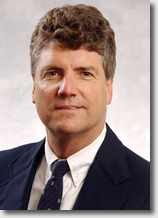
"SMILE! You're on Traffic Light Camera: Applying Stated Choice Modeling to Transportation"
Douglass Shaw, PhD
Professor
Water Resources Policy and Economics
Department of Agricultural Economics
Texas A&M University
Brief bio
A survey technique long used by new product marketers to determine, for example, what type of shampoo consumers might buy, Stated Choice Modeling (SCM) "has a direct application" in transportation projects. W. Douglass Shaw, the presenter of the latest University Transportation Center for Mobility (UTCM) lunchtime colloquium April 14, had many examples of how SCM might be used by transportation researchers.
Shaw is a professor with both the Texas A&M University Department of Agricultural Economics and Recreation, Parks and Tourism Sciences (RPTS).
"Stated Choice Modeling has some advantages in transportation, especially because it gives respondents the chance to choose from several alternatives that don’t yet actually exist," Shaw told the crowd. For example, SCM can help determine what factors might be important in establishing new transportation routes or making improvements in existing ones.
Shaw’s presentation was entitled "Smile! You’re on Traffic Light Camera: Applying Stated Choice Modeling to Transportation." The title was derived from a project by Agriculture Economics and RPTS graduate students who are using SCM to assess College Station’s existing and future red light camera programs.
In the project, the students are determining how the red light cameras affect driver behavior, as well as road, traffic, and pedestrian safety, at key intersections in Bryan and College Station. Their preliminary results indicate that the assessed fines are an important attribute of the future program. The speed limit at those intersections also matters.
TTI researchers Tim Lomax and Mark Burris are using SCM on current transportation projects, including an examination of the potential for congestion lanes on Texas freeways. Shaw will be helping Burris and a graduate student on a UTCM-funded project this coming summer.
Flyer
![]() [ JPG, 111K ]
[ JPG, 111K ]
Slides
![]() [ PowerPoint, 861Kb ]
[ PowerPoint, 861Kb ]
Streaming Video
[ Top ]
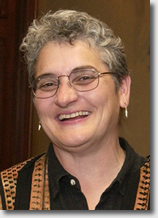
Co-sponsored by TTI Diversity Council
"Diversity at Texas A&M: Why So Slow?"
Karan L. Watson, PhD, PE
Dean of Faculties and Associate Provost
and Regents Professor of Electrical Engineering
Texas A&M University
Brief bio
In honor of Black History Month, the UTCM and the TTI Diversity Council co-sponsored the Mobility Colloquium on the diversification of Texas A&M University. Dr. Karan Watson, Dean of Faculties and Associate Provost and Regents Professor of Electrical Engineering, was the guest speaker for the noontime event held at the Gilchrist Building.
Watson noted the slow progress of Texas A&M’s efforts in diversifying its students and faculty by citing low percentages of minorities at TAMU compared to the percent of college-ready high school graduates in Texas.
"For the state we live in, if TAMU does not change its behavior, by 2030 we will be a minority-serving university instead of having a well-represented segment of the population," said Watson, referring to the projected year in which whites will become the minority in Texas.
Watson also encouraged everyone to look within themselves and ask what they are doing to improve diversity efforts. "It would be better for us to be seen as the institution that welcomes everyone and for us to get past our schema and our own history," said Watson.
"I thought she was excellent," said TTI Chief Information Officer & Director of Information Systems Kassandra Agee-Letton, who chairs TTI's Diversity Council. "Her talk homed in on the all the things we need to consider as an agency, and she gave the statistics to support her position as well as the anecdotal evidence to bring this home to the audience."
Melissa Tooley, Director of UTCM, stated that "it was a pleasure to co-sponsor this special Mobility Colloquium to honor Black History Month and bring the topic of diversity to TTI. Dr. Watson's presentation was very thought-provoking and stimulated some interesting discussion both at the Colloquium itself, and in the hallways afterward! This kind of dialogue will help TTI and TAMU prepare for the workforce of the future."
Flyer
![]() [ JPG, 155K ]
[ JPG, 155K ]
[ Top ]
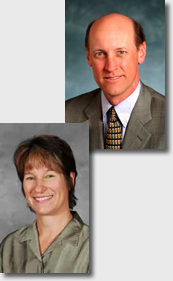
"Communicating the Value of Your Research: How to Convince Your Mom That You Contribute to Society"
Timothy J. Lomax, PhD
Research Engineer
Mobility Analysis Program
Texas Transportation Institute
Brief bio
Johanna Zmud, PhD
President, NuStats
Brief bio
![]() [ PDF, 75K
]
[ PDF, 75K
]
Synopsis by Rick Davenport, TTI Communications
Slides
![]() [ PPT, 1.1M ]
[ PPT, 1.1M ]
Flyer
![]() [ JPG, 167K ]
[ JPG, 167K ]
[ Top ]

"Designing for Context: Enhancing Safety and Mobility through Urban Design"
Eric Dumbaugh, PhD
Assistant Professor
Dept. of Landscape Architecture & Urban Planning
Texas A&M University
Brief bio
We often focus largely on moving high volumes of traffic on urban arterial roads. The problem is that in urban areas, development often clusters along arterials, resulting in lower-speed, access-related traffic mixing with mobility-related traffic. This mix of uses and users results in both higher crash rates and increased traffic congestion, particularly at signalized intersections.
Slides
![]() [ PPT, 29.64M ]
[ PPT, 29.64M ]
Flyer
![]() [ JPG, 163K ]
[ JPG, 163K ]
View photos from this colloquium.
[ Top ]
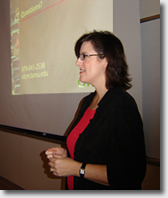
"The ABCs of UTCM: Who We Are and How to Get Funded"
Melissa S. Tooley, PhD, PE
Director, UTCM
An Introduction to the University Transportation Center for Mobility™ and its director Melissa Tooley, including a review of our research focus areas and discussion of our recently released RFPP. Includes Q&A on the UTCM funding process.
[ Top ]


